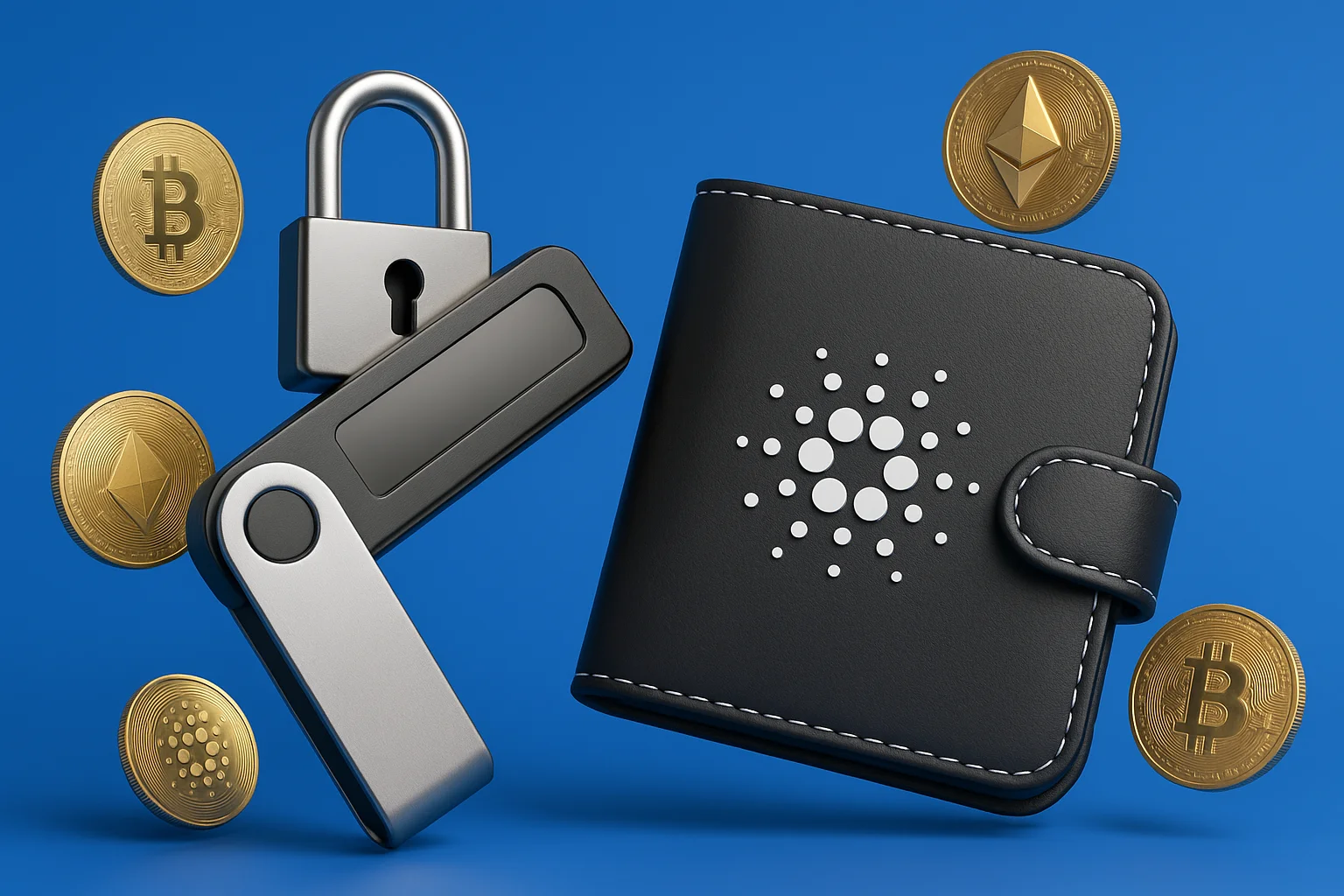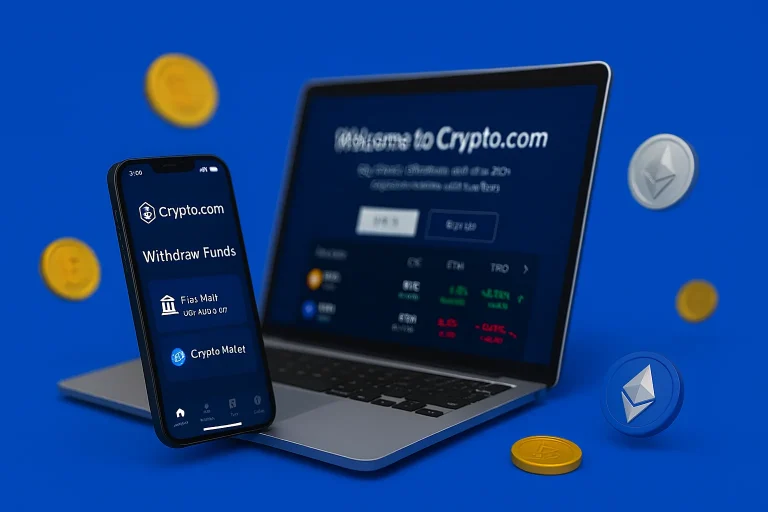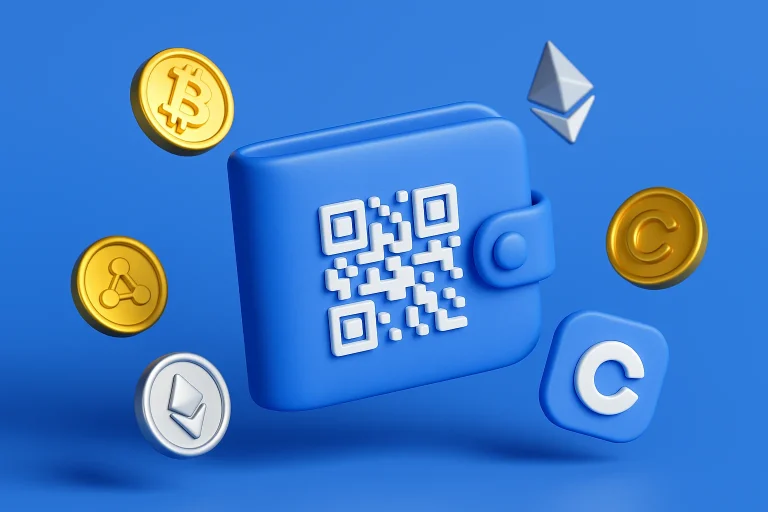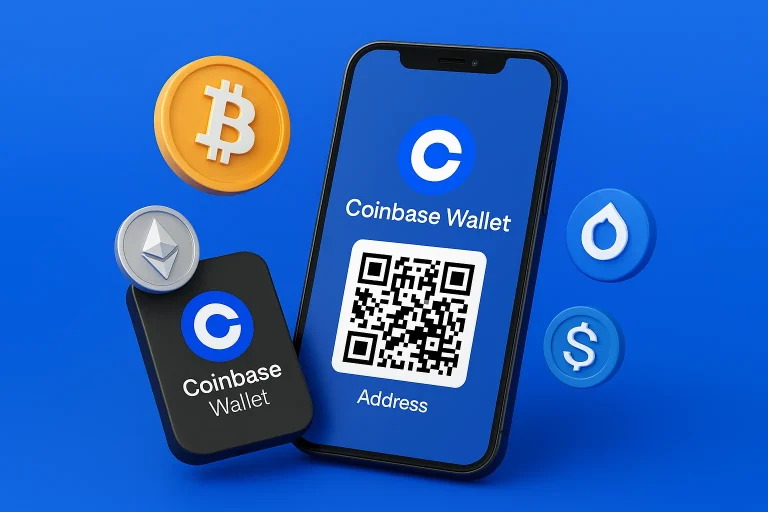Many crypto users struggle to decide between custodial and non-custodial wallets. This choice is critical because it defines who controls the private keys and how secure your cryptocurrency holdings will be.
Without understanding the main difference, users risk relying on a centralized exchange that can freeze funds or mishandling a non-custodial setup that could permanently cut off access. This confusion often leads to lost opportunities and missed exposure to financial opportunities across the crypto space.
In this guide, we break down how custodial wallets and non-custodial crypto options work, what non-custodial wallets offer, and how to evaluate each.
If you’re still exploring how different wallet types fit into the crypto ecosystem, check our expert picks for the Top Crypto Wallets and the Best Mobile Crypto Wallets to compare user-friendly and secure options available in 2025.
Table of contents
Understanding Custodial vs. Non-Custodial Wallets
Managing cryptocurrencies starts with choosing the right type of wallet. The primary debate revolves around custodial wallets and non-custodial wallets, and understanding the difference is crucial if you want to maintain better control over your digital assets. Let’s break it down in a way that even beginners can follow.
If you’re using Coinbase and need to locate your deposit address, see our guide on how to find your Coinbase wallet address.
What is a Custodial Wallet?
A custodial wallet is a type of crypto wallet managed by a third party, usually an exchange or another wallet provider. In this case, the company controls your private keys, meaning they technically hold the access rights to your funds.
Think of it like a bank account number. You can view your balance, deposit, or withdraw funds, but the bank retains ultimate control over the backend. With custodial wallets, you trust the provider to keep your crypto assets safe and allow you to transact.
Custodial wallets are often associated with major cryptocurrency exchanges. To understand how these platforms work and where you can trade securely, explore our list of the Best Decentralized Exchanges.
How Does a Custodial Wallet Work?
When you open a custodial account (say, a Coinbase account or an exchange wallet), you’re essentially outsourcing the responsibility of safeguarding your funds to the service. These companies, often referred to as virtual asset service providers, keep users’ funds in their infrastructure.
The advantage is that you don’t have to worry about keeping your private key safe or writing down a recovery phrase. If a user loses access to their login, customer support can usually assist them in regaining access. Some custodial services even provide insurance coverage against certain risks.
The trade-off is that you introduce counterparty risk. If the provider gets hacked, shuts down, or freezes withdrawals, your money could be at risk of being locked. Essentially, you give up complete control for the sake of convenience and a more seamless user experience.
Some examples of well-known custodial wallets include the exchange wallets offered by Coinbase, Binance, Kraken, Gemini Custody, and Crypto.com. In all of these cases, the service provider holds and manages the user’s keys, meaning you rely on the company to safeguard your funds and provide access when needed.
If you prefer maximum offline protection, consider reviewing our roundup of the Best Crypto Cold Wallets, perfect for long-term holders seeking complete security.
What is a Non-Custodial Wallet?
A non-custodial wallet flips the model. Here, users’ private keys are stored on their computer or mobile device, not with a third party. A non-custodial crypto wallet ensures you have sole responsibility for securely storing your credentials.
These wallets can be either hardware wallets (cold storage) or software wallets (hot wallets, which are accessed on a phone or desktop). Whether it’s through hardware devices or a mobile application, you (rather than an exchange) hold the keys.
Because non-custodial wallets give you full control, you are also solely responsible for keeping your seed phrase safe. Lose it, and you may lose access permanently, with no customer support to help you.
How Does a Non-Custodial Wallet Work?
When you create a non-custodial wallet, the system generates a wallet address, a public key, and a seed phrase. These are essential for identifying your account and proving ownership. The recovery phrase is your backup (without it, your cryptocurrency holdings are unrecoverable).
Transactions occur directly on EVM-compatible networks or blockchains, eliminating the need for a centralized platform. Non-custodial wallets connect with decentralized applications (dApps) and decentralized finance protocols, allowing users to participate in the crypto industry beyond just buying crypto on most exchanges.
However, since you are not relying on a third party, you pay gas fees for crypto transactions directly, and you must ensure you’re securely storing your keys away from malicious actors. There’s no safety net, but also no custodial vs. non-trust issues.
Popular non-custodial wallets are Trust Wallet, MetaMask, Ledger Nano, Trezor, and Exodus. These solutions provide you with full control over your private keys and cryptocurrency holdings, whether through hardware wallets for offline storage or software wallets running on mobile devices or computers.
To better understand when it’s safer to store crypto in a wallet or keep it on a trading platform, see our full crypto wallet vs exchange guide.
Custodial vs. Non-Custodial Wallets
Key Similarities and Differences | |
|---|---|
| Both are crypto wallets used for storing and transacting digital assets. | Custodial wallets rely on virtual asset service providers, whereas non-custodial wallets eliminate intermediaries and work directly with the blockchain. |
| Both generate a wallet address tied to a public/private key pair. | Custodial wallets may offer insurance coverage and customer support, whereas non-custodial wallets place sole responsibility for security on the user. |
| Both support cryptocurrency holdings across multiple blockchains. | Custodial wallets can freeze or restrict access to users’ funds; non-custodial wallets ensure full control and unrestricted transfers. |
| Both can be accessed through mobile or desktop interfaces. | Custodial wallets can conceal real transaction costs; non-custodial wallets, on the other hand, expose direct on-chain gas fees. |
| Both can be hot or cold, depending on the setup. | Custodial wallets are integrated with most exchanges for easy trading, while non-custodial wallets integrate with decentralized applications (dApps) and DeFi. |
| Both require security features to protect against hacks. | Custodial wallets simplify the process for beginners; the best non-custodial wallet requires managing a seed phrase and keeping the private key secure. |
Evaluating Custodial and Non-Custodial Wallets
How to Choose What Fits You Best
When deciding between custodial and non-custodial wallets, the right choice depends on how much control, security, and responsibility you’re ready to handle over your digital assets. Below are clear guidelines to help you evaluate your options.
To better understand how wallet control affects transactions, see our step-by-step tutorial on how to send Bitcoin to another wallet. It’s a practical example of how ownership differs between custodial and non-custodial setups.
If You Want a Custodial Wallet
Opt for a custodial wallet if you value simplicity, customer support, and a user-friendly experience. These wallets are typically managed by virtual asset service providers such as centralized exchanges.
Here’s what you can expect:
- Easy account setup: Just like a bank account number, your provider manages the backend while you handle deposits and withdrawals.
- No private key management: The wallet provider secures your users’ private keys, so you don’t need to worry about a seed phrase or recovery phrase.
- Customer support & insurance: If a user loses access to their account, the provider can help regain access, and some offer insurance coverage for users’ funds.
- Seamless trading: Many custodial crypto wallets connect directly with exchange wallets, such as Coinbase, Binance, or Crypto.com, providing a seamless user experience.
- Reduced responsibility: You relinquish complete control, but gain convenience and lower entry barriers for buying or tracking cryptocurrency.
- Hidden trade-offs: While you avoid handling private keys, you accept counterparty risk and reliance on a centralized platform for fund access.
If You Want a Non-Custodial Wallet
Choose a non-custodial wallet if you prefer full control of your crypto assets and don’t want to depend on intermediaries. You are solely responsible for your private keys and the safety of your funds.
Here’s what you’ll get:
- True ownership: Your users’ private keys are stored locally on your computer or mobile device, not on any server.
- Variety of options: You can use hardware wallets (like Ledger Nano or Trezor) for offline storage or software wallets (like Trust Wallet or MetaMask) that store keys on your device.
- Integration with DeFi: Non-custodial crypto wallets connect with decentralized applications and decentralized finance platforms, opening access to new financial opportunities.
- Transparent transactions: You pay gas fees and transaction costs directly on-chain; no hidden charges from a wallet provider.
- High responsibility: Losing your seed phrase or failing to store it securely can result in permanent loss of access. There’s no recovery help.
- Privacy & independence: Non-custodial wallets offer autonomy from centralized exchanges, giving you the freedom to manage funds across EVM-compatible networks and various crypto assets.
If you’re considering a more secure way to store your private keys, you can check our full Keystone 3 Pro review for a breakdown of its features, security design, and real-world performance.
FAQ
What is a private key?
A private key is a unique cryptographic code that proves ownership of your crypto assets. In non-custodial crypto wallets, users’ private keys are stored locally, granting them full control over their funds. Keeping the private key safe is critical to avoid losing access.
Is Binance a non-custodial wallet?
No, Binance wallets are custodial crypto wallets, meaning Binance holds the private keys of its users. You trade and store assets on their centralized platform, but the wallet provider retains control of your keys.
Is Revolut a non-custodial wallet?
No, Revolut wallets are custodial, not non-custodial cryptocurrency wallets. Revolut, as the wallet provider, manages the user’s funds, similar to a bank account number, and does not give you access to your private keys.
Are software wallets non-custodial wallets?
Most software wallets are indeed non-custodial wallets, as they allow you to control your private keys and are solely responsible for access. A software wallets store the keys on your computer or mobile device, giving you full control. However, not all are non-custodial, as some providers offer custodial crypto wallets where the wallet provider manages your keys.
How do I identify whether my wallet is custodial or non-custodial?
Check if you have the seed phrase or recovery phrase. If you control your user’s private keys, it’s a non-custodial wallet. If the wallet provider stores them on your behalf, it’s a custodial wallet.
What should I choose between a custodial vs. a non-custodial wallet?
If you want convenience and support from a wallet provider, go for custodial wallets. If you want complete control over your cryptocurrency holdings and no counterparty risk, a non-custodial crypto wallet is the better option.
Should I use a non-custodial wallet?
Yes, if you value full control, integration with decentralized applications, and secure storage of your assets. However, remember that you are solely responsible for your recovery phrase. If the user loses it, access cannot be regained.
What’s worth noting about non-custodial wallet providers?
It’s worth noting that non-custodial wallet providers let you control your own keys, unlike crypto exchanges that hold them for you. Most support the BNB Chain and other major networks for their flexible asset management capabilities. You’ll need a stable internet connection to send or verify transactions. Your transaction history stays local and private, not stored by third parties. For added security, connect cold wallets to keep assets offline. This setup maximizes control while reducing external risks.
Conclusion
Choosing between custodial and non-custodial wallets is one of the most important steps in any crypto journey. The main difference comes down to who controls the private keys and how much responsibility you are ready to take.
Custodial wallets simplify access but rely on a centralized exchange or wallet provider.
In contrast, non-custodial wallets offer direct control, better privacy, and a wider range of financial opportunities through DeFi and dApps.
Weighing all of these, choose wisely and responsibly.




